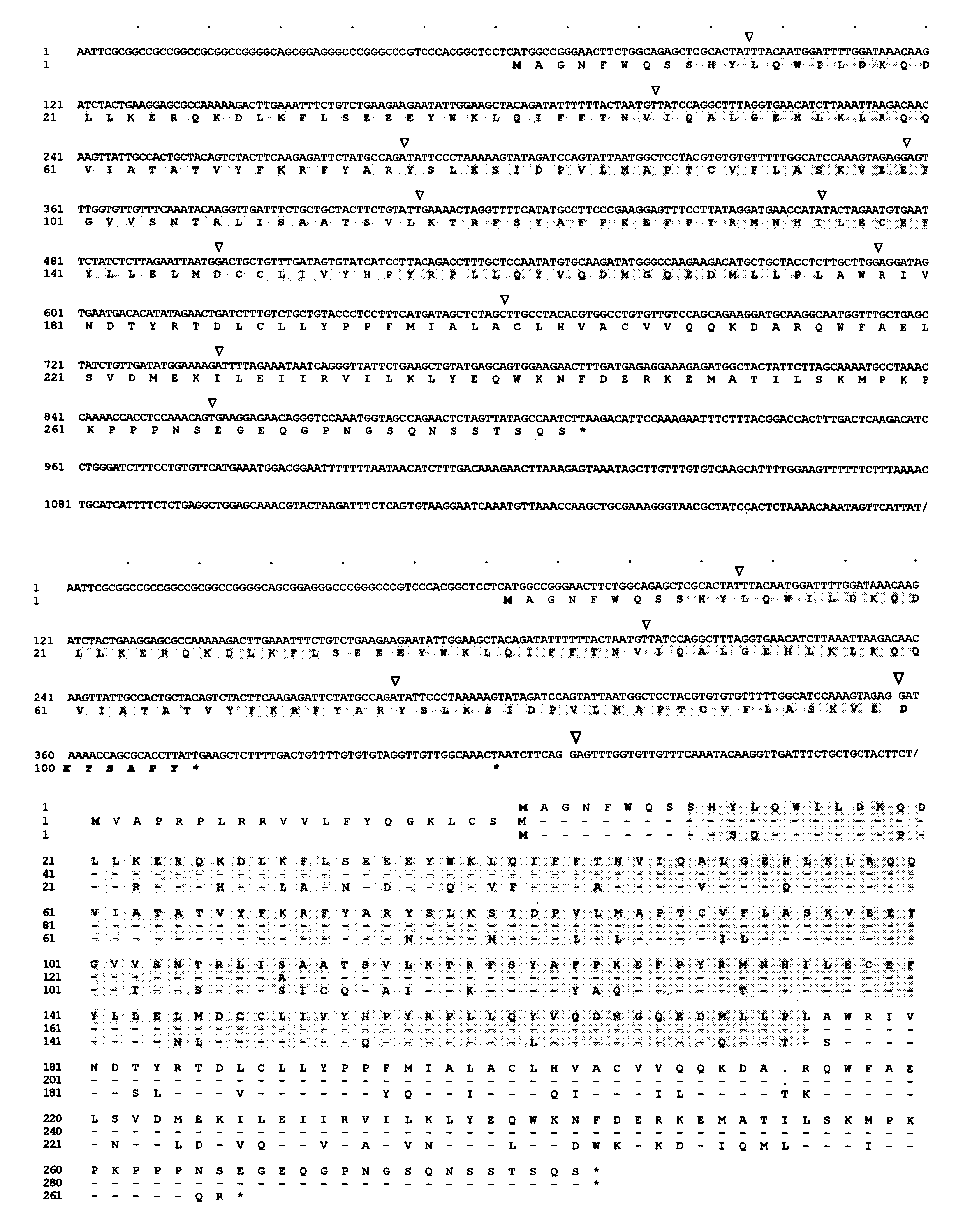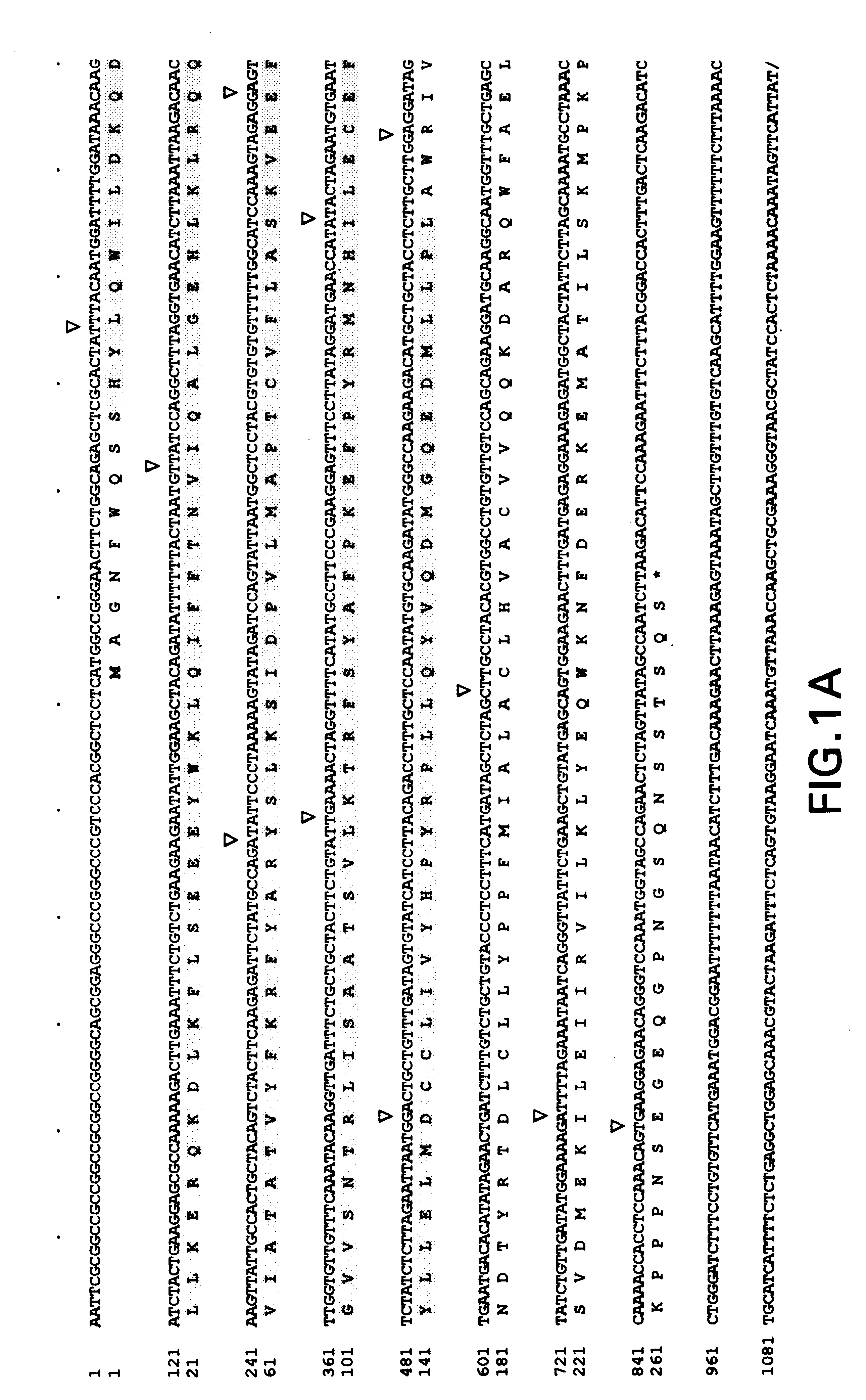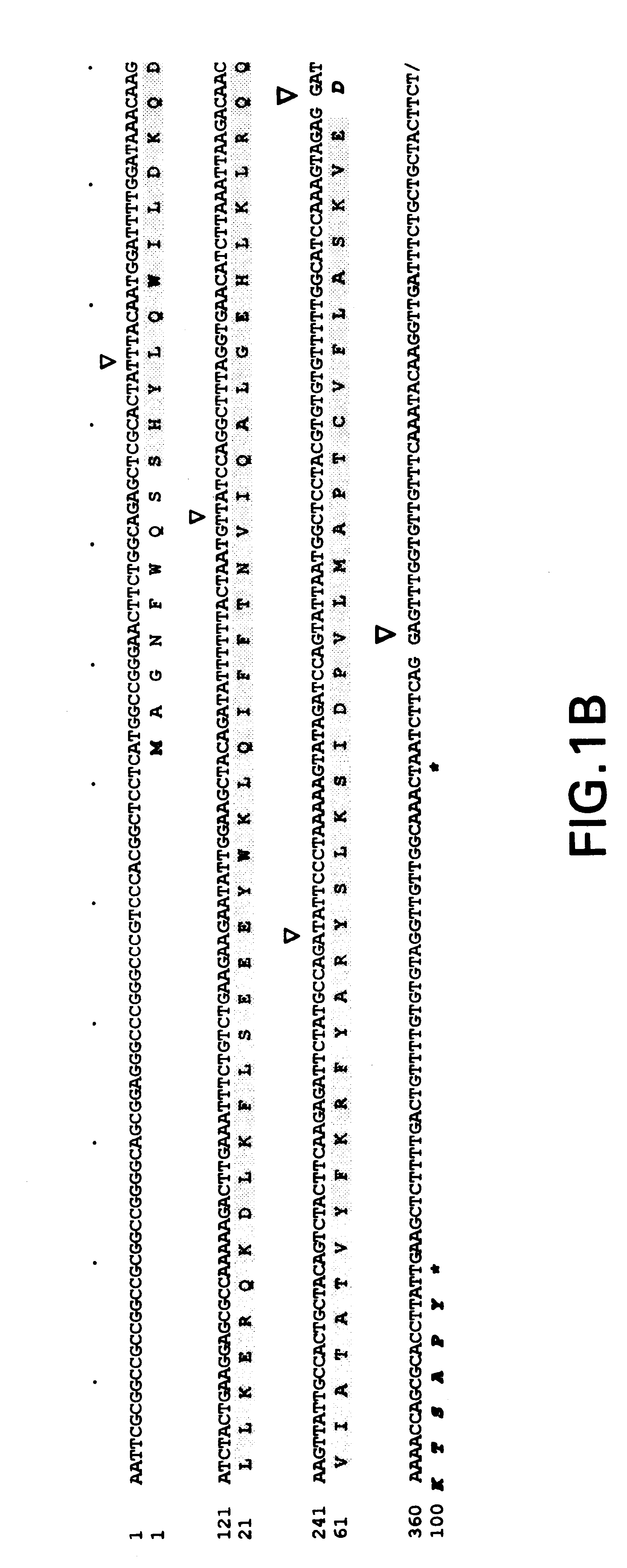Cyclin-C variants, and diagnostic and therapeutic uses thereof
a technology of cyclin-c variants and diagnostic and therapeutic uses, which is applied in the direction of peptides, viruses, fused cells, etc., can solve the problems of unregulated dna replication and no factor analogous to a cdk inhibitor has been identified
- Summary
- Abstract
- Description
- Claims
- Application Information
AI Technical Summary
Problems solved by technology
Method used
Image
Examples
example 1
Alternatively Spliced Cyclin C mRNA is Widely Expressed, Cell Cycle Regulated, and Encodes a Truncated Cyclin Box Protein
Introduction
Screening of an avian T-cell cDNA library results in the isolation of a cyclin C homologue as well as an abundant, yet distinct, cyclin C-related cDNA. The predicted open reading frame (ORF) of the cyclin C cDNA predicted a 283 amino acid protein that is >99% identical to the human protein and 72% identical to the Drosophila melanogaster protein. However, the predicted-ORF of the cyclin C-related cDNA predicts a much smaller 105 amino acid protein that is identical to cyclin C well into the cyclin-box region (amino acid residue 98), where it abruptly diverges and then terminates. Using PCR analysis of cDNA derived from a range of cell lines and tissues, alternative splicing of the avian cyclin C gene is demonstrated. This alternatively spliced cDNA is the result of the insertion of a unique exon containing premature termination codons within the cyclin...
example 2
The Truncated Cyclin C Protein Functions as a Cyclin Dependent Kinase Inhibitor
Introduction
The truncated cyclin box protein retains its ability to bind to the catalytic subunit through interactions between the cyclin box and cdk (Parry et al., EMBO J. 14:503-511 (1995)) and thereby competes for binding to cdk8 with the wild-type cyclin C protein during specific intervals of the cell cycle. The truncated cyclin C protein functions in such a manner as to resemble other CKIs, although it is the first example of the utilization of a portion of the same cyclin protein coding region as a CKI within either the cyclin or cdk gene families.
In vitro Analysis of Normal and Truncated Cyclin C Protein Function, and Generation of Antibodies
To determine whether a truncated cyclin C protein is produced in vivo, antibodies generated to the first 98 amino acids of cyclin C are utilized. Two commercial polyclonal rabbit anti-human cyclin C antibodies corresponding to different aminoterminal peptides o...
example 3
Cyclin C mRNAs and Proteins in Mammals
Introduction
The truncated cyclin C protein exists in humans and has a similar or identical function as the avian truncated cyclin C. In addition, a human cyclin C with an alternative carboxy terminal end is identified. Finally, the in vitro and in vivo systems established in this example can be used to functionally examine any genetic alterations identified in the CCNC locus in human tumors.
Both the predicted ORF of the cyclin C protein and the mosaic structure of the gene is absolutely conserved between human and chicken (Li et al. (1996a). Antibodies that recognize the aminoterminal region of cyclin C, and, as a result, the truncated cyclin C protein, allow identification of a similar truncated protein to be made in mammals. Several different human cell lines (including HeLa and W138 normal diploid fibroblasts) are synchronized with either drugs (such as nocodazole or aphidicolin), serum depletion, or centrifugal elutriation as described. Cell...
PUM
| Property | Measurement | Unit |
|---|---|---|
| Length | aaaaa | aaaaa |
Abstract
Description
Claims
Application Information
 Login to View More
Login to View More - R&D
- Intellectual Property
- Life Sciences
- Materials
- Tech Scout
- Unparalleled Data Quality
- Higher Quality Content
- 60% Fewer Hallucinations
Browse by: Latest US Patents, China's latest patents, Technical Efficacy Thesaurus, Application Domain, Technology Topic, Popular Technical Reports.
© 2025 PatSnap. All rights reserved.Legal|Privacy policy|Modern Slavery Act Transparency Statement|Sitemap|About US| Contact US: help@patsnap.com



